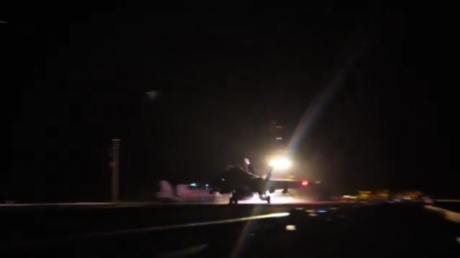Eritreans are preparing to celebrate the 34th anniversary of Fenkil Operation, an operation that resulted in one of the greatest military victories in the long and bitter struggle for independence. Fenkil Operation was a three-day battle that began on 8 February and ended on 10 February1990 with the liberation of the port city of Massawa.
The liberation of Massawa had created fundamental military changes in the balance of power in favor of Eritrea’s freedom fighters. More than 40 thousand Ethiopian soldiers were either killed, captured, or wounded; 80 tanks were captured and 30 more tanks burned; and the Ethiopian naval force was annihilated. The liberation of Massawa, a port city on the Red Sea, had strategic importance in the struggle for independence because it meant shutting down the main artery for the transport of logistics and armament of the Ethiopian army in Eritrea.
Fenkil Operation reduced the Ethiopian army, the largest in Africa at the time, into a toothless tiger. The military establishment, which was assisted by the West and East at different times, lost the spirit to fight. Its disillusionment was so great that its desperate attempts to reclaim Massawa failed miserably. More than 300 high and low ranking military officers, including Brigadier General Tilahun Kilfe, Brigadier General Ali Haji Abdulahi and Captain Tsegaye Mekonen, were taken captives in the swift and decisive battle.
When the EPLF forces controlled large parts of Massawa, the remaining enemy soldiers were concentrated in Twalet, a small area connected to the mainland via a narrow causeway known as Sigalet. Under the command of Brigadier Genernal Teshome Tesema, the desperate army held the civilian population hostage. EPLF’s call for the release of the civilians and its offer of amnesty to the besieged army fell on deaf ears. And following its 12 hours of unilaterally declared ceasefire, EPLF’s tanks and infantry raided Tiwalet and the port, liberating the people that had been taken hostage by the Ethiopian army.
Fenkil Operation is the greatest strategic military operation carried out by the EPLF after the battle of Afabet that smashed Ethiopia’s strongest Nadew Command.
The coordination and speed of the Fenkil Operation took the Ethiopian army by surprise. It was an amphibious operation, the first of its kind in the history of the struggle, involving the infantry, mechanized units and the navy, and it covered a vast area — 1560 square kilometers. Fenkil Operation was a decisive battle and was described by General Philipos Woldeyohaness, as tightening the noose on the throat of the enemy. Major General Romodan Awlyay, who was commander of the mechanized division of the EPLF, also described Derg’s fate as “similar to the fate of a tree without roots.” With the capture of Massawa in February 1990, the EPLF effectively cut off the Ethiopian forces in Eritrea from direct access to the Red Sea. Fenkil Operation profoundly shook the foundation of the Derg and hastened the final defeat of the Ethiopian army in Eritrea.
The liberation of Massawa was a surprise to both friends and foes in the world. On its 10th February 1990 broadcast, the BBC stated that “if the victory claimed by the EPLF is true, it’s a big blow to President Mengistu.” Brigadier General Tilahun Kifle, commander of the 606 corps who was captured at the battle, described the battle in these words: “I have seen many battles. At this front, I have received my first defeat in my career as a military leader. I’ve lost my fighting spirit at this battle. The speed and morale of your fighters [EPLA] surpassed that of ours.’ Similarly, Brigadier General Ali Haj Abdu, another captive who was commander of the 3rd mechanized unit, also acknowledged the talent of the EPLF commanders and the superior mobility and speed of the fighters, and their skillful use of artillery.
Mengistu Hailemariam understood the war had entered a critical stage and said: “The occupation of Massawa means the occupation of the second revolutionary command that we consider as the backbone of our defense forces.” The victory of the Fenkil Operation put the Ethiopian colonial army in Eritrea in complete encirclement. The Derg, as it always did, responded to its military humiliation by bombing the civilian population of Massawa using cluster and napalm bombs. The frantic act of the Derg is known by Eritreans as qbtset (desperation). The bombing of the port of Massawa was particularly brutal and destructive, with merciless attacks by the Ethiopian Air Force on civilians and the infrastructure.
The political consequence of the Fenkil Operation was equally great. For the first time in its history, the Derg admitted its defeat. A week after the liberation of Massawa, Mengistu sent his message of defeat to all his military units telling them that with the capture of Massawa the spinal column of the Ethiopian army had been broken, making the independence of Eritrea a reality. In earnest, the central committee of the Ethiopian Workers’ Party, the ruling party, convened and passed farcical resolutions. The party promised to undertake economic reforms and changed its name to Ethiopian Democratic Unity Party. The bitter taste of defeat forced Mengistu Hailemariam to publicly acknowledge that they had been strangled by the throat. Fenkil Operation and the subsequent successful coordinated military attacks in both Eritrea and Ethiopia undertaken by the EPLF exerted maximum pressure, resulting in Mengistu’s flight to Zimbabwe.
The final objective of the Eritrean armed struggle was to establish an independent Eritrea. Eritrean Eritreans fought for thirty years for no reason other than to further that political objective. Fenkil Operation is revered as a great success because of its decisive contribution to the realization of the political objective of Eritreans. It was a vivid demonstration of the unparalleled determination and military prowess of Eritrean freedom fighters who deserve to be remembered eternally.





+ There are no comments
Add yours